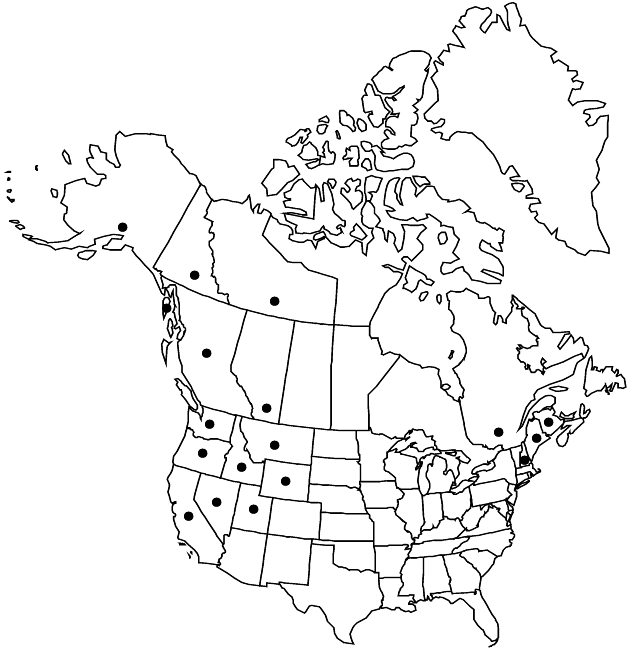Arnica lanceolata
Trans. Amer. Philos. Soc., n. s. 7: 407. 1841.
Plants (5–)20–80 cm. Stems solitary to densely clumped, simple or branched among heads. Leaves 4–8(–10) pairs, mostly cauline; usually sessile (sometimes with partly connate-sheathing bases), sometimes petiolate (proximalmost); blades lance-elliptic, lanceolate, oblanceolate, obovate, or ovate, 4–12(–20) × (1–)2–6(–8) cm, margins subentire to dentate-serrate, apices usually acute, rarely obtuse, faces glabrate to pilose. Heads (1–)3–10(–20). Involucres narrowly campanulate to turbinate. Phyllaries 8–15(–19), narrowly to broadly lanceolate. Ray florets (5–)7–17(–20); corollas yellow. Disc florets: corollas yellow; anthers yellow. Cypselae brown, 4–8 mm, sparsely hirsutulous, stipitate-glandular; pappi tawny, bristles subplumose.
Distribution

North America.
Discussion
Subspecies 2 (2 in the flora).
Selected References
None.
Key
| 1 | Cauline leaves mostly sessile (proximalmost pair petiolate); e North America | Arnica lanceolata subsp. lanceolata |
| 1 | Cauline leaves sessile (including proximalmost pair, bases sometimes partly connate-sheathing); w North America | Arnica lanceolata subsp. prima |